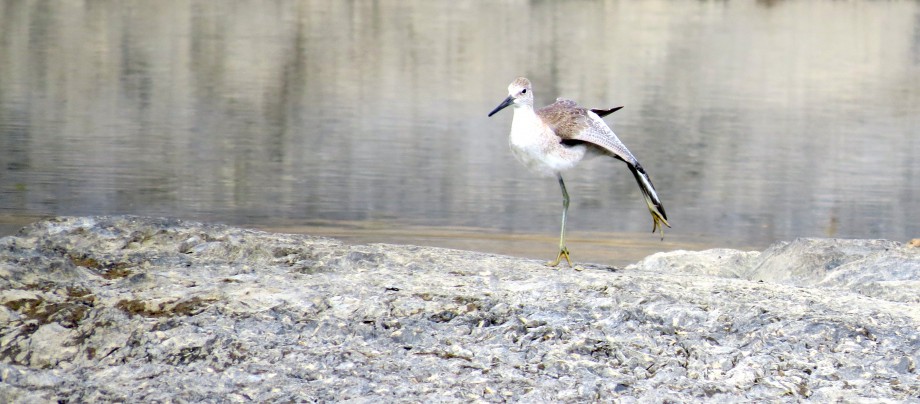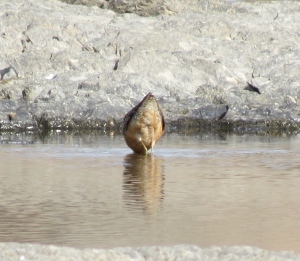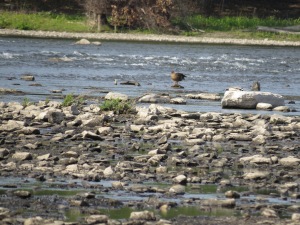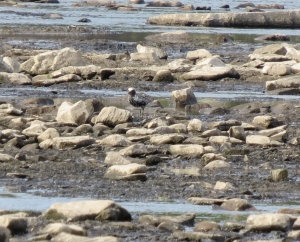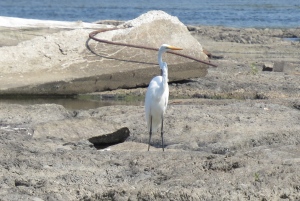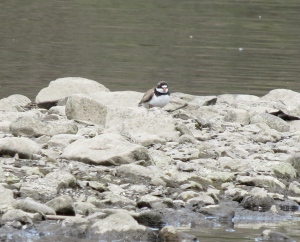Shorebirds continue to trickle in at Cohoes Flats. We local birders need to set up a rota so someone’s there every day to greet the newcomers. Just this week in addition to the Willet we’ve played host to a Dowitcher, probably Short-billed.
Important protip – always go for the butt shot for those all-important undertail coverts!
Now, I know what you’re going to say. “Naomi, if that’s a Short-billed Dowitcher, what the heck does a Long-billed look like?!?” Answer: practically the same. They were considered the same species until the 1950s and their beak lengths overlap. Peterson’s Birding By Impression says they “…have long been regarded by experts as unidentifiable in many field conditions…”, and who am I to argue with the experts? But I’ll try. First, Long-bills are more central-to-western, while Shorts migrate down through New York and New England. Longs are more uniformly and darkly red, while Shorts are lighter to white on the belly and vent. Their flight calls are different, but who wants to scare the bird off to ID it? In conclusion, the odds favor Short-billed Dowitcher, but I’ll readily accept correction.
Also here today, a Black-bellied Plover.
Keep looking — there’s a shorebird in there!
All part of the Cohoes Flats experience — lots of nooks and crannies for cryptically-colored birds to vanish into.
Great egrets are passing through too, probably a dozen or more this week.
Killdeer up the wazoo, of course, and their little cousins Semipalmated Plovers. One black necklace instead of two.
Greater and Lesser Yellowlegs, much easier to tell apart when mixed flocks are dashing around.
Upturned longer bill and thick legs on the Greater (right).
Plus an excitable and ambitious Merlin pursuing a crow.
With today’s cold front passing through, I wonder what tomorrow will bring?
